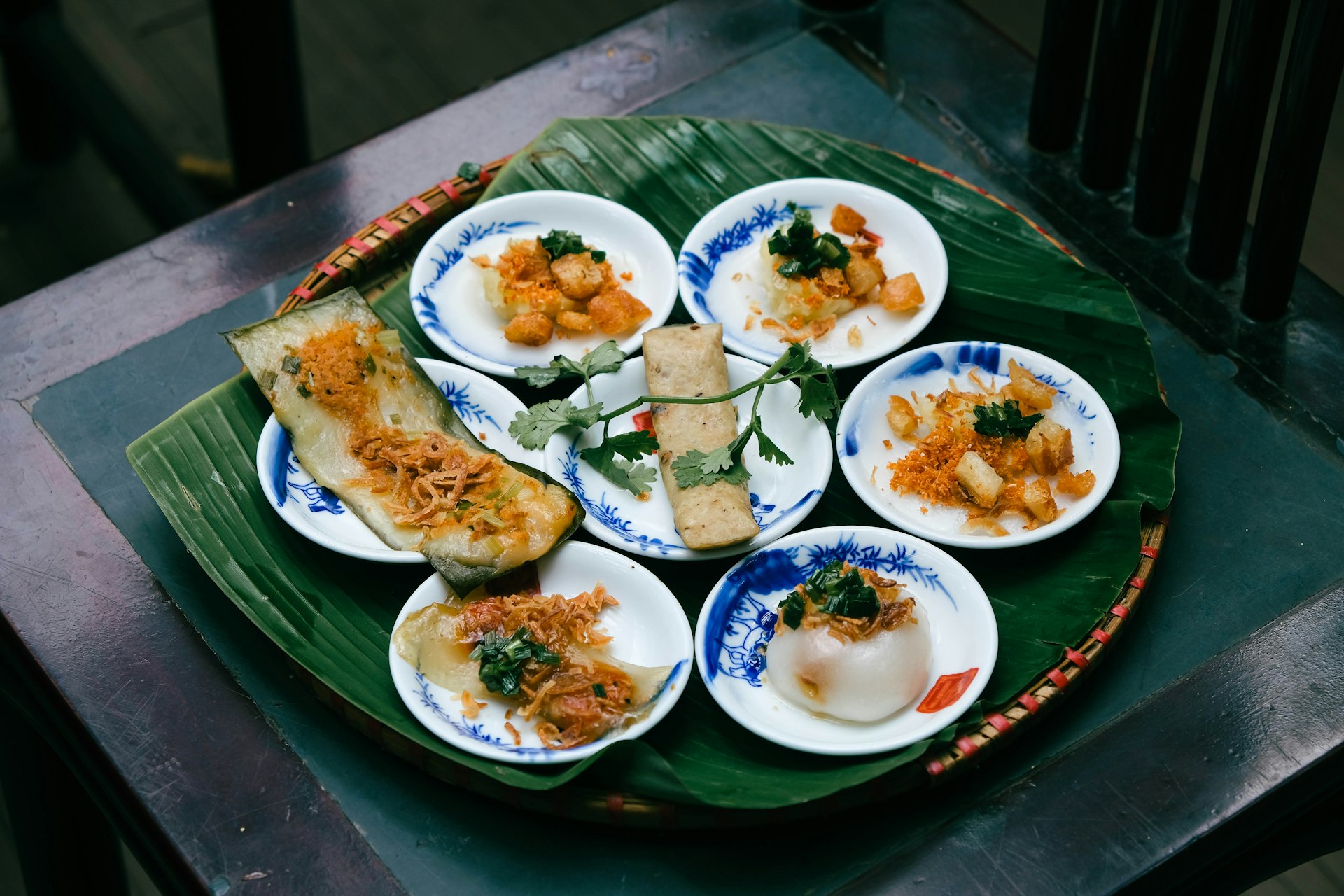Unlocking Asia's Culinary Wonders: Your Guide to Authentic Gastronomic Travel Experiences


Photo by Trình Minh Thư on Unsplash
Introduction: The Allure of Asian Gastronomic Travel
Asia stands as a global epicenter for culinary exploration, offering travelers a dynamic blend of tradition, innovation, and sensory delight. From bustling urban food markets to serene countryside cooking classes, the region’s food scenes are as diverse as its cultures. For those seeking authentic gastronomic experiences, Asia presents a wealth of opportunities to taste, learn, and connect with local communities. This guide provides actionable steps, real-world examples, and strategies to help you access the most memorable culinary adventures across the continent.
Understanding Gastronomic Travel Experiences in Asia
Gastronomic travel goes beyond simply eating-it immerses visitors in the rituals, histories, and daily lives surrounding food. In Asia, this means savoring street food in Bangkok, joining a cooking class in Kyoto, or navigating the night markets of Taipei. These experiences offer not just delicious meals but also deep cultural exchange and personal enrichment. Engaging with food on this level allows you to appreciate the ingredients, techniques, and stories that make each region unique. [5]
Popular Destinations for Food Travelers
Asia’s culinary hotspots offer something for every palate. Here’s a closer look at some of the most renowned cities and regions for food adventures:
-
Chiang Mai, Thailand:
Known for its markets bursting with fresh produce and specialties like
Khao Soi
, Chiang Mai is a haven for food-focused travelers. Vegan and vegetarian options abound, and many visitors opt for guided street food or Michelin-starred tours. Cooking classes, like the Market and Thai Herbs Garden Tour, provide hands-on learning in local kitchens. [1] [3] - Tokyo, Japan: Tokyo’s vibrant neighborhoods, such as Shibuya, host specialized food tours-including vegan options. Tourists can explore everything from sushi to decadent desserts, often concluding with a celebratory sake at a local bar. Reputable food tour operators, such as Magical Trip, are known to offer these experiences. [4]
- Lahore, Pakistan: Renowned for its barbecue culture, particularly chicken tikka, Lahore’s food scene is both accessible and rich in flavor. Travelers can sample dishes at local institutions like Ashraf Fresh Tikka and explore the city’s bustling eateries. [3]
- Jakarta, Indonesia: Jakarta offers guided culinary expeditions through famed food streets, where visitors can try local delights like fried tempeh, sambal, and klepon (a sweet, coconut dessert). Many tours operate on a tip basis, making them accessible for all budgets. [4]
- Hong Kong & Seoul: Both cities are famous for their food tours, which take visitors from hawker stalls to traditional tea shops. In Seoul, travelers can also partake in hands-on kimchi-making classes, delving into the heart of Korean culinary tradition. [2]
Step-by-Step Guidance for Accessing Culinary Experiences
To unlock the most rewarding gastronomic experiences in Asia, consider the following approaches:
- Research and Plan Ahead: Begin by identifying your destination’s signature dishes and food-centric neighborhoods. Search for terms like “food tours in [city]”, “best cooking classes [city]”, or “street food markets [city]” to find reputable operators and reviews.
- Book With Established Tour Providers: Renowned companies such as Secret Food Tours operate in numerous Asian cities, offering expertly guided culinary walks and hands-on classes. Always verify the provider’s credentials and user reviews before booking. [2]
- Explore Local Markets and Street Food: Upon arrival, visit major markets-such as Chiang Mai’s day and night bazaars-where you can sample local produce and specialties. Markets are often the best introduction to a city’s food culture. [1]
- Join a Cooking Class: Many cities offer classes led by local chefs, allowing you to learn authentic recipes and techniques. These often include a market tour and the opportunity to cook (and eat) a complete meal. To find these, search for “cooking class [city] official tourism” or check with your hotel’s concierge for recommendations.
- Seek Out Specialty Experiences: Look for niche tours, such as vegan or dessert-focused walks, or unique activities like kimchi-making in Seoul. Use search terms like “themed food tours [city]” or “culinary workshops [city]”.
- Consider Dietary Needs: Most major cities in Asia now accommodate vegetarians, vegans, and those with dietary restrictions. Tours often specify available options-always confirm before booking.
- Engage Directly With Locals: Use reputable platforms (such as official tourism boards or well-reviewed tour providers) to connect with local guides who can offer insider access to hidden food gems.
- Document and Share Your Journey: Many travelers create food journals or document experiences on social platforms to enrich the journey and help others find authentic recommendations.
Real-World Examples and Case Studies
Case Study: Chiang Mai, Thailand A traveler seeking plant-based cuisine in Chiang Mai booked a guided street food tour and participated in a cooking class focused on local herbs and vegan recipes. The experience included market visits, hands-on instruction, and sampling of regional dishes such as Khao Soi and durian. The classes were easily found by searching “Chiang Mai cooking class” and verifying companies via major travel review sites. [1]
Case Study: Tokyo, Japan In Tokyo, a visitor interested in vegan cuisine joined a dedicated Night Food Tour in Shibuya, sampling plant-based sushi, noodles, and desserts. The tour was arranged through Magical Trip, a reputable operator with verifiable offerings. The experience concluded at a local bar with sake and panoramic city views. [4]
Case Study: Lahore, Pakistan A food enthusiast in Lahore focused on iconic barbecue dishes, following local recommendations to find highly rated spots such as Ashraf Fresh Tikka. The traveler combined self-guided exploration with insights from food blogs and local contacts, ensuring an authentic and varied tasting experience. [3]
Challenges and Solutions
Travelers may encounter challenges such as language barriers, dietary restrictions, and increased demand for popular tours. To address these:
- Language Barriers: Seek tours with English-speaking guides or book through reputable international providers. If traveling independently, learn key food-related phrases or use translation apps.
- Dietary Restrictions: Many tours specify vegetarian, vegan, or allergy-friendly options. Confirm with providers before booking and communicate your needs clearly.
- Booking Availability: High-demand tours can fill quickly, especially in peak travel seasons. Book in advance where possible, and always verify cancellation policies.
- Authenticity Concerns: To avoid tourist traps, prioritize tours with strong local reputations and positive user reviews. Seek recommendations from official tourism boards or established travel publications.
Alternative Approaches to Culinary Exploration
While guided tours and classes are popular, travelers may prefer independent exploration. Here’s how to maximize your experience:

Photo by Baiq Daling on Unsplash
- Use local food blogs and social media for real-time recommendations.
- Visit local markets and ask vendors for their personal favorites.
- Attend food festivals or seasonal events, which often showcase regional specialties.
- Connect with fellow travelers for group dining experiences or shared culinary adventures.
For official guidance, consider contacting the local tourism board for each city or region, as they often maintain updated lists of reputable food events and experiences.
Summary and Key Takeaways
Asia’s gastronomic travel experiences offer a transformative way to engage with culture and community. From guided food tours in bustling capitals to immersive cooking classes in tranquil villages, the region’s culinary landscape is as rich as it is accessible. By researching ahead, booking with reputable providers, and staying open to new flavors, travelers can unlock a world of discovery and delight. For those unsure where to start, begin with official tourism resources or well-reviewed operators, and always verify details before booking.
References
- [1] Museum of Wander (2024). Foodie Experiences in Southeast Asia: 15 Best Culinary Experiences.
- [2] Secret Food Tours (2024). Asia Food Tour.
- [3] Hungry Young Woman (2024). 15 Food Cities in Asia for the Ultimate Foodie.
- [4] Time Out Asia (2024). The Best Food Tours in Asia.
- [5] Epicurean Traveler (2024). Head to Asia for Truly Authentic Culinary Experiences.






